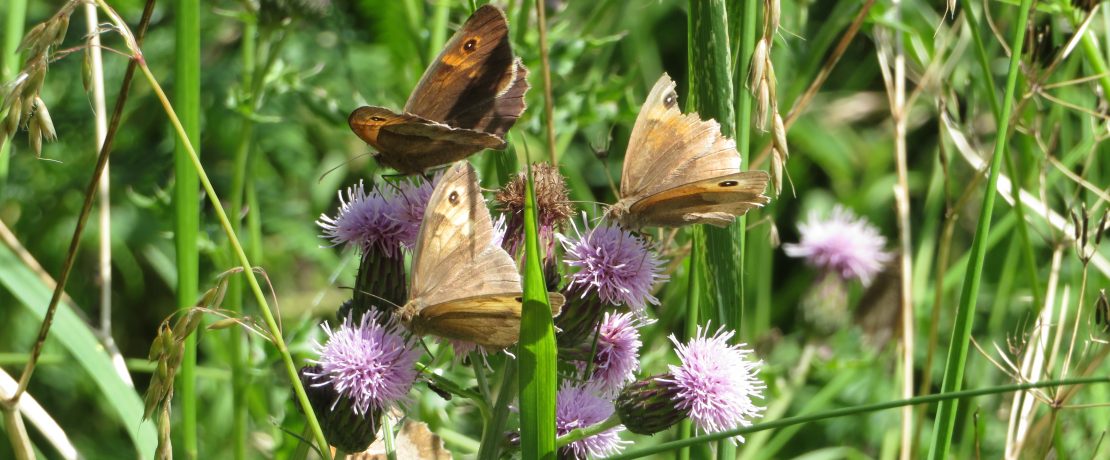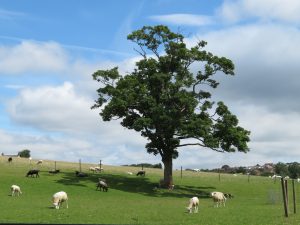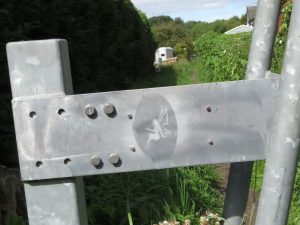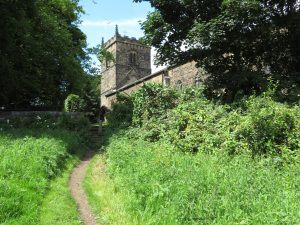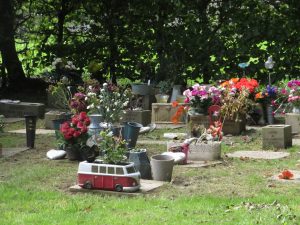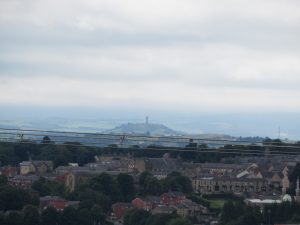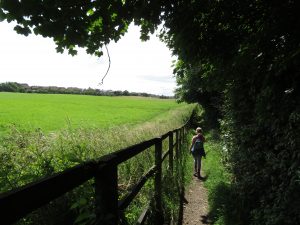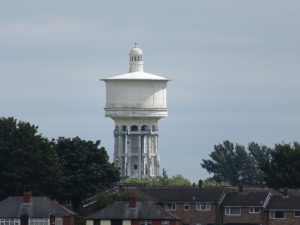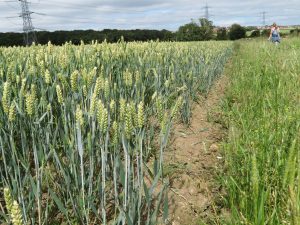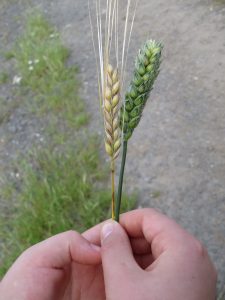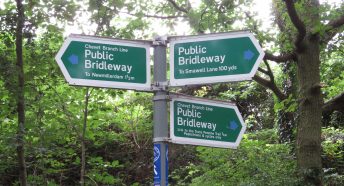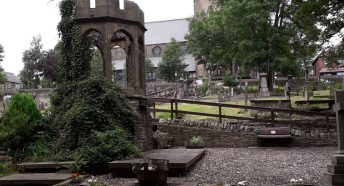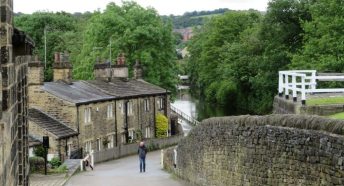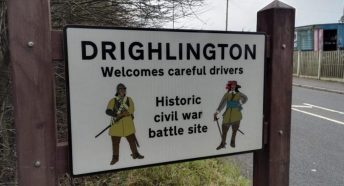Shifting Baseline Syndrome: Haigh Woods, Howley Hall and Chidswell
Today I am getting to know a landscape that is destined to be urbanised. As I am still in pandemic homeschooling mode, I’ve brought my daughter with me.
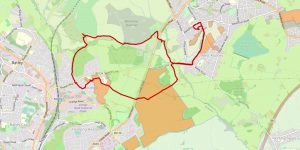
16 July 2020 (10.5km)
We start at the British Oak pub, Westerton Road, West Ardsley and find the footpath that leads into Haigh Woods. We walk the first short stretch with hands aloft, avoiding the stinging nettles and the brambles that are laden with unripe fruit. It is classic residential fringe land, the kind I love to visit in late August to supply me with blackberries for jam and wine. I once made a fruit compote to feed 80 people from a place just like this. This site that has a planning application for housing, and I imagine these brambles could make light work of recolonising the new gardens. How much artillery bombardment of glyphosate and astroturf will they endure if the plans go ahead?
Dropping down a little we cross a tiny watercourse, the source of Baghill Beck. Water from here joins Alverthorpe Beck and eventually pops out into the River Calder, almost directly outside the Hepworth Gallery, by which point it would have once supplied several mills. Our path then climbs steeply up to the other edge of Haigh Woods, and heads south along the contour. To our right, the woodland is charming and gives welcome shade from the lunchtime sun: after a showery start the day is becoming hot and muggy. To our left, a wooden fence that is festooned with thistles and butterflies; and beyond that, a grass meadow ascends away from us with housing at its ridge.
This meadow is a prime example of what I call ‘glint sites’. Once you have your eye in, you can’t miss them. They are spaces that would take two or three minutes to walk across, usually through grassland or arable crops, and invariably someone is walking a dog along one edge. They are bounded on one or two sides by existing housing. And the glint I mention is in the eye of the land prospector who sizes them up as prime housebuilding opportunities.
We emerge from the woodland proper into a fringe land of rowan trees in full, amber display, and encounter a man walking an impossibly huge dog. The dog’s harness says ‘NERVOUS’ on it, and I wonder if there is a missing question mark.
At this point, I start explaining to my daughter the concept of Shifting Baseline Syndrome. If the sites are developed here, the woodland will remain, but with the openness around it much reduced. I might mourn the obliteration of a humble blackberry picking spot, but a new visitor in the future would know nothing of that loss.
A trudge against the oncoming traffic on Hey Beck Lane takes us under an ornate but tired ‘Welcome to Kirklees’ sign, and then we veer off along the edge of Woodkirk Beck. Some sheep seem to be telling us there’s a bar nearby, but instead we cross a ‘Foot Golf’ course and then pause for breath (or, more precisely, crisps) in the churchyard of St Mary’s Church, Woodkirk. The parish dates back to the Doomsday Book and the tower is 12th Century.
It’s a beautiful, heavy building, but the graves here are lovingly tended, almost playful in their riot of colourful flowers. The reverie this induces in me is brutally shattered as we cross the monstrous dual carriageway of Leeds Road and then begin a hot, sweaty slog around the southern edge of Howley Park Quarry. Moans of “How much further now?” from a few yards behind me are met with cantankerous reassurance: ‘It’ll be worth it when we get to the ruin.’ Typing those words now makes me realise how unconvincing they must’ve been to a 10-year old.
Nevertheless, it’s amazing that such a vast quarry is almost completely hidden, and eventually we stumble into the lumpy remains of Howley Hall. Here we intersect with the Dewsbury to Pudsey walk I made last winter, but in summer this is a popular spot, and we share our lunch venue with at least four other groups. Two parents laboriously lug a pushchair over the ruins. High voltage power lines slice through the panorama of Batley and Dewsbury, and towards Castle Hill. The Elizabethan aristocrat who built this place would never have tolerated the view being carved up like that.
Well lunched, we push on into Soothill, and a depressing stretch of the path runs in a narrow gulley between high-fenced back gardens and an overgrown, fly-tipped no-man’s land. This is what happens when private boundaries are pushed up hard against an unsupervised green space, and I desperately hope that Haigh Woods is spared this fate. If some development there proves inevitable, then the rear boundary treatments will be crucial.
After crossing Soothill Lane we enter another site allocated for housing development. It’s at the top of the hill and has a good easterly aspect, though I’m distracted from it by administering to a blister on my daughter’s toe. As we head down across the fields towards Leeds Road, our first glimpse of Gawthorpe Water Tower presents an opportunity for a quick school lesson in the physics of water pressure. Apparently the tower, nicknamed the Iron Giant, is under threat of demolition, and a local campaign has sprung up to save it. It’s like a lighthouse, accidentally impaled on a hillside far from the shore. I’m reminded of a similar campaign to save the Tinsley cooling towers outside Sheffield, and also of the mixed reactions to the Angel of the North at Gateshead. Industrial landmarks need not be classically pretty, but they gain an iconic status and even a mythological significance. Generic development – built down to a budget – can never connect with people’s lives like that.
Finally, after another grim dash across the dual carriageway, we come to the site of the Chidswell urban extension. There is no sign of it yet – it is just some expansive wheat fields framed by two tracts of woodland and bisected by a march of electricity pylons. It’s a gigantic ‘glint site’. It’s in a very visible tract of landscape, but I ponder whether or not it’s an interesting landscape. I seek my daughter’s opinion, as we debate the aesthetics of the pylons. “I really like it,” she says, pulling the ears off a wheat stalk. “It’s open and peaceful, and I like the colours.”
We’re back to Shifting Baseline Syndrome. Imagine this open, bright sweep of countryside in 30 years’ time. A huge housing estate has been trowelled onto it. These two sleepy, white cows no longer gaze absently up at it. The Iron Giant no longer surveys it from the hilltop. Most of its occupants may have no concept of what the place used to be like, just as we struggle to picture Howley Hall before its destruction. Whether the past was better or worse, or both, is not the point. What matters is that the future is at least as interesting. If my daughter were to take this walk with her own child 30 years hence, would she find the prompts for conversations about jam, butterflies, textile magnates, gravity, quarry restoration? I really hope so.
